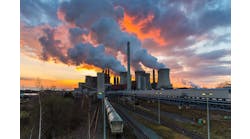I started my career in the chemical industry in the wake of the 1970s oil crisis. Rising energy prices loomed forever. Companies were scrambling to save energy to stay profitable.
Times change. Comparatively low energy prices now make it much harder to justify projects based on energy cost savings alone, especially in the United States. However, another driver has emerged — decarbonization, the reduction of emissions of carbon dioxide and other greenhouse gases.
Unlike most other approaches to decarbonization, energy efficiency reduces operating costs. This makes it a very attractive option. However, energy efficiency has limits. Some of these are due to fundamental science: there is a thermodynamic minimum energy requirement for every process. Others are economic: many processes have practical limitations that are prohibitively difficult and expensive to overcome. To achieve the deep decarbonization society now demands, we must supplement energy efficiency with other approaches. Three leading candidates have emerged:
Electrification. Almost all heating in oil refineries and chemical plants is done by burning fossil fuels in boilers and furnaces; steam turbines or gas turbines drive much of the power requirement. These are the main combustion-related sources of CO2 emissions.
Replacing fired boilers and furnaces with electric boilers and furnaces, and turbine drivers with electric motors, in principle can eliminate most of these emissions. New technologies, such as electric reactors, also are emerging. However, both the capital costs and operating cost typically are higher for electrical equipment. Also, for some applications (e.g., cracking furnaces), no commercially demonstrated electric technologies exist, although research and development is ongoing (see: “Interest in Electricity Heats Up”).
Electrifying all of this equipment would greatly increase the electric demand at each site. It would mandate expansion of onsite electrical infrastructure and the offsite electric grids that serve the industry. In addition, it would require new low-carbon or carbon-free power generating facilities. Without them, plant electrification would simply move the carbon emissions to power generation facilities.
Hydrogen. When pure hydrogen burns, it produces no CO2 — only water. This makes it an obvious candidate as a decarbonization fuel. However, achieving deep decarbonization would require commercially pure hydrogen to displace fossil fuels for all combustion needs in process plants — boilers, furnaces, gas turbines, etc. This would necessitate major modifications, including replacing many very expensive equipment assets.
For hydrogen, as in the electrification scenario, we have to consider not just the consumers, but also the sources. Fossil fuels produce most hydrogen today, with a large carbon footprint. So, if we want to use hydrogen as a decarbonization fuel, we must decarbonize its production process. Two possible options are: 1. recover the CO2 coproduced with fossil-fuel-based hydrogen and store it geologically; and 2. produce hydrogen by electrolysis of water, using renewable electricity.
Biofuels. Biomass is plant or animal material used as fuel. A biofuel is any fuel derived from biomass. Biofuels can be tailored as “drop-in” substitutes for existing fuels and used in existing equipment with little or no modification. For example, biodiesel is a drop-in replacement for petroleum diesel. For the process industries, biomethane (renewable natural gas) is of great potential interest as a substitute for natural gas; existing natural gas networks can supply it. Consuming sites would need no major modifications.
Burning biofuels does produce CO2 but crops can reabsorb it to make more biomass and biofuels — a virtuous cycle that, in theory at least, results in “net zero” carbon emissions.
However, large-scale production of biomass for biofuels would compete with other land-use options, most notably food production, and for irrigation water. In addition, the harvest and transportation of biomass requires significant amounts of energy, and can also create a nuisance for nearby communities.
Energy efficiency remains an important priority in the process industries — not only for energy cost reduction, but also, increasingly, for decarbonization. Yet, there are still many challenges to overcome for electrification, hydrogen, and biofuels to achieve deep decarbonization.



